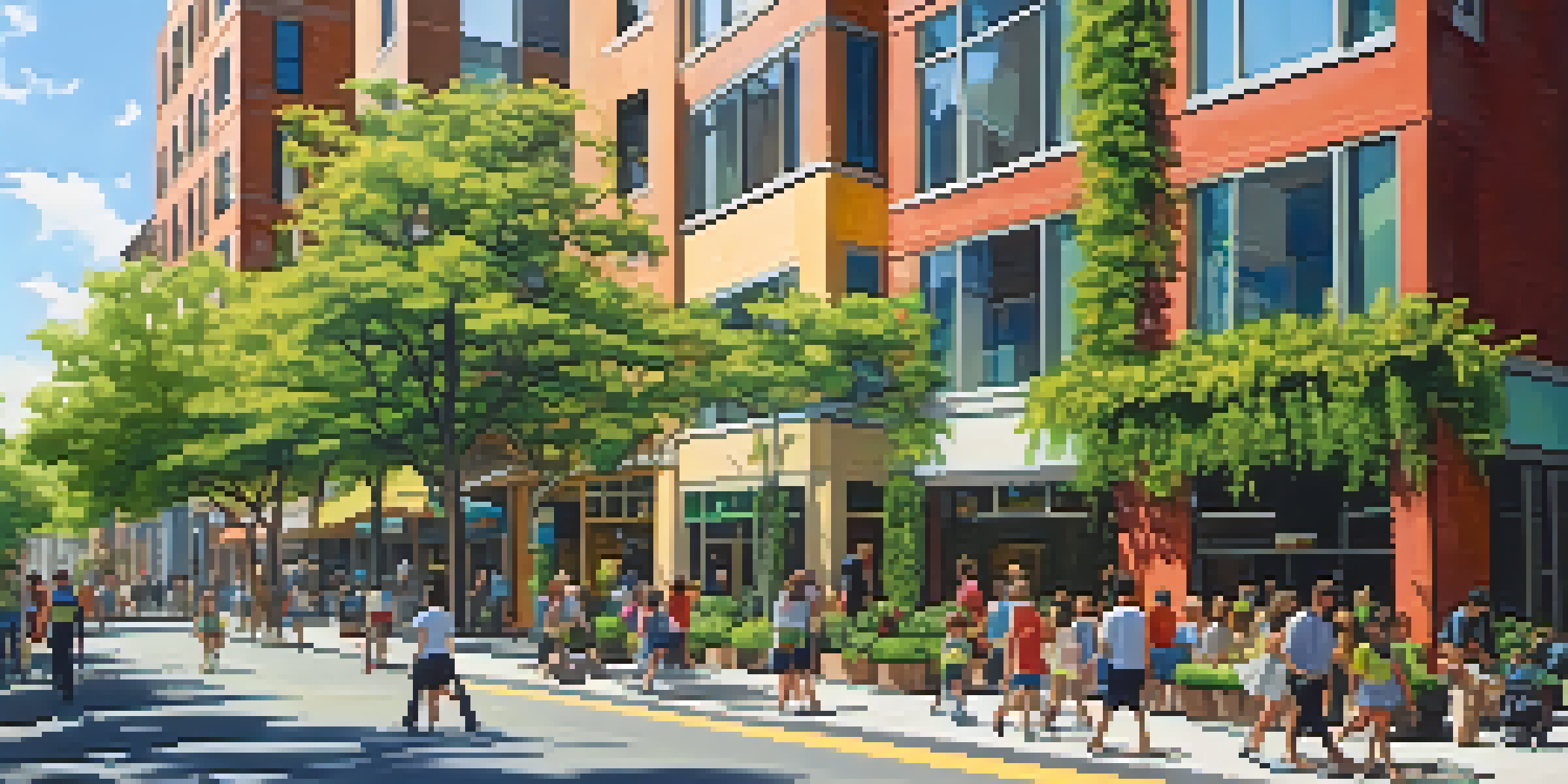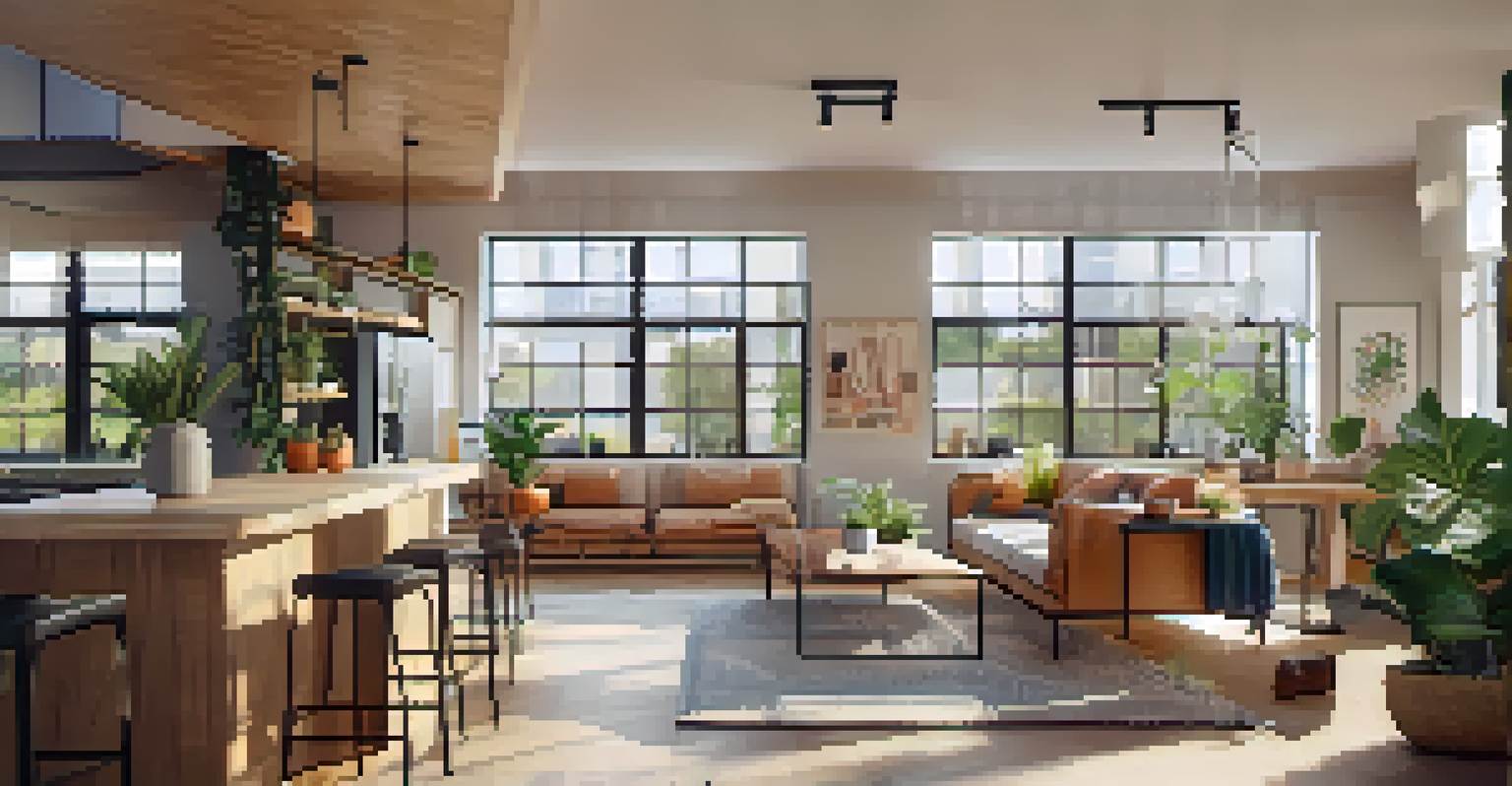The Evolution of Urban Housing: From Past to Present

Understanding the Roots of Urban Housing
Urban housing has a rich history that dates back thousands of years. In ancient civilizations, housing was often a reflection of social status, with the wealthy living in grander structures while the lower classes resided in simpler homes. These early urban dwellings were typically built with locally available materials, showcasing the architectural styles and cultural influences of the time.
The city is not a concrete jungle, it is a human zoo.
As cities began to grow, so did the complexity of urban housing. The rise of trade and industry during the Middle Ages led to the development of more organized urban centers, where housing became more concentrated. This shift not only influenced the design of homes but also introduced concepts like communal living, as families began to share resources in closely knit communities.
Understanding these historical roots is crucial as they set the stage for the evolution of urban housing. The interplay between social, economic, and technological factors over the centuries has shaped the way we live in cities today, laying the groundwork for modern urban housing.
The Industrial Revolution's Impact on Housing
The Industrial Revolution marked a significant turning point in urban housing. As factories sprang up, people flocked to cities in search of jobs, leading to a rapid increase in population density. This surge created a demand for more housing, often resulting in overcrowded and unsanitary living conditions.

To accommodate the growing workforce, developers turned to building tenements—multifamily housing units that maximized space. While these buildings provided shelter, they often lacked basic amenities, highlighting the need for improved living standards. The challenges faced during this period prompted social reformers to advocate for better housing policies and urban planning.
Historical Evolution of Urban Housing
Urban housing has evolved significantly from ancient civilizations to modern times, influenced by social, economic, and technological changes.
Thus, the Industrial Revolution not only shaped the physical landscape of cities but also initiated conversations about housing rights and urban living conditions, themes that continue to resonate in discussions about urban housing today.
The Rise of Suburbia in the 20th Century
The 20th century saw a dramatic shift in urban housing with the rise of suburbia. After World War II, returning soldiers and their families sought affordable housing options, leading to a boom in suburban developments. These new neighborhoods offered a stark contrast to the crowded city centers, featuring single-family homes, yards, and a sense of community.
We shape our buildings; thereafter, they shape us.
Suburban living became synonymous with the American Dream, emphasizing space, safety, and a slower pace of life. Developers capitalized on this trend, creating cookie-cutter homes that catered to the desires of the growing middle class. This shift also led to the expansion of infrastructure, including schools, parks, and shopping centers, making suburbs increasingly attractive.
However, this suburban sprawl had its downsides, such as increased reliance on cars and a decline in urban populations. It sparked a debate about urban planning, sustainability, and the future of cities, prompting a re-evaluation of how we define 'home' in urban contexts.
Modern Urban Housing: Trends and Innovations
In recent years, urban housing has witnessed a wave of innovation driven by changing lifestyles and technological advancements. Concepts like micro-apartments and co-living spaces have emerged to address the needs of younger generations seeking affordability and flexibility. These modern designs prioritize efficient use of space while fostering a sense of community among residents.
Sustainable building practices have also gained traction, with a focus on eco-friendly materials and energy-efficient technologies. Urban developers are increasingly integrating green spaces, rooftop gardens, and solar panels into their projects, creating healthier living environments while reducing the carbon footprint of urban housing.
Challenges of Urban Housing Today
The current urban housing landscape faces pressing issues such as affordability crises and urban sprawl, requiring collaborative solutions.
As cities continue to evolve, these trends reflect a deeper understanding of the importance of community, sustainability, and adaptability in urban living. The innovations of today are paving the way for more resilient and inclusive urban housing solutions.
The Role of Technology in Urban Housing
Technology has become a game-changer in the realm of urban housing. From smart home devices that enhance comfort and security to apps that streamline maintenance requests, technology is transforming the way we interact with our living spaces. This seamless integration allows residents to manage their homes more efficiently and connect with their communities.
Moreover, advancements in construction technology, such as 3D printing and modular building techniques, are revolutionizing the housing market. These methods enable faster and more cost-effective construction, addressing the urgent need for affordable housing in urban areas. By reducing waste and improving efficiency, technology is reshaping the future of urban development.
As we look ahead, the marriage of technology and urban housing presents exciting possibilities. The ongoing innovation is not just about convenience but is essential for creating sustainable and inclusive living environments in our ever-evolving cities.
Challenges Facing Urban Housing Today
Despite the advancements, urban housing faces significant challenges in today's world. One of the most pressing issues is the affordability crisis, where rising property prices and rents make it increasingly difficult for many to secure stable housing. This crisis disproportionately affects low-income families, leading to increased homelessness and housing instability.
Additionally, urban sprawl continues to pose challenges for city infrastructure and transportation systems. As more people move to the outskirts of cities in search of affordable housing, it places strain on public services and increases traffic congestion. This phenomenon raises questions about sustainable urban planning and the need for balanced development.
Future Trends in Urban Housing
Innovations like smart cities and sustainable design are shaping the future of urban housing, emphasizing balance between technology and community needs.
Addressing these challenges requires a collaborative effort among policymakers, developers, and communities. Finding solutions that prioritize affordability, accessibility, and sustainability will be crucial in shaping the future of urban housing.
The Future of Urban Housing: What Lies Ahead?
Looking to the future, urban housing is poised for further evolution as cities adapt to changing demographics and environmental challenges. Concepts like smart cities are gaining traction, where technology is harnessed to improve urban living through data-driven solutions. This approach can enhance everything from traffic flow to energy consumption, creating more livable urban environments.
Moreover, the focus on sustainability will continue to shape urban housing design. As climate change poses new threats, integrating resilient infrastructure and sustainable practices into housing developments will be paramount. This shift not only addresses environmental concerns but also enhances the quality of life for residents.

Ultimately, the future of urban housing is about balance—between innovation and tradition, affordability and quality, and individual needs and community values. As we navigate this journey, the lessons learned from the past will guide us toward building inclusive and vibrant urban spaces.